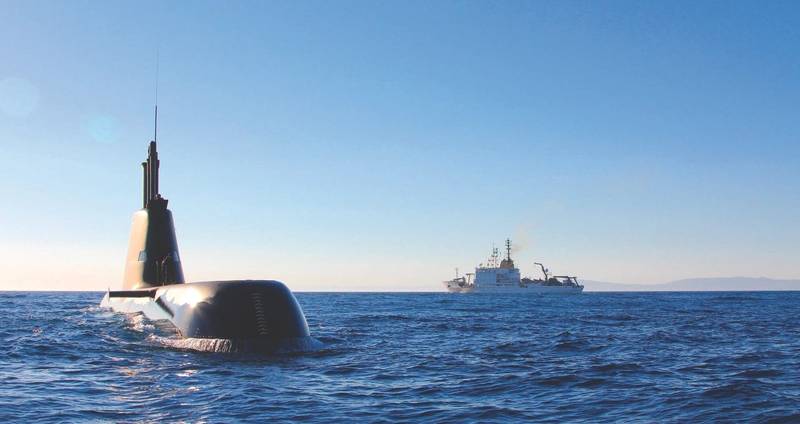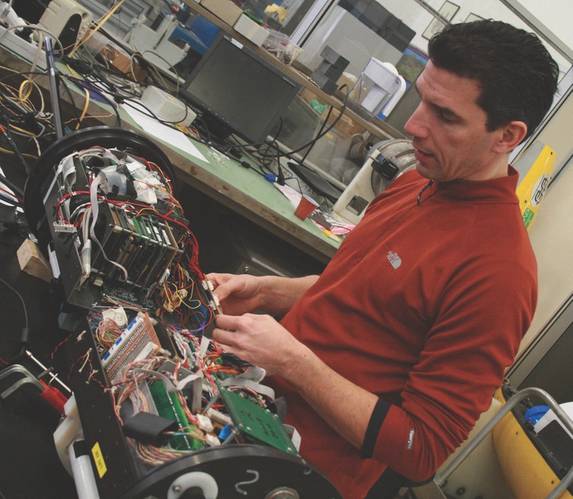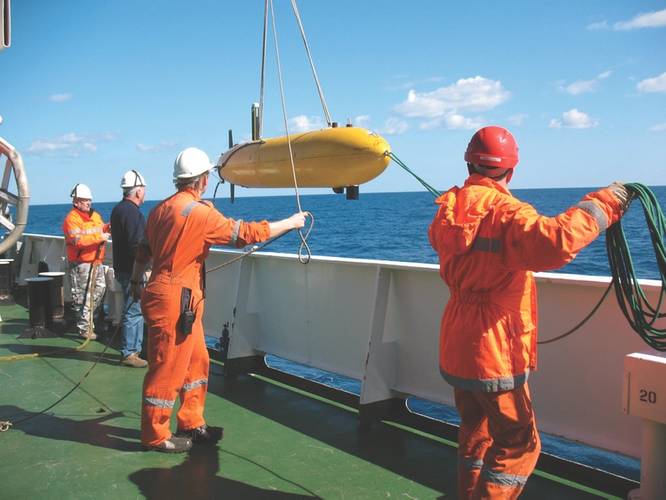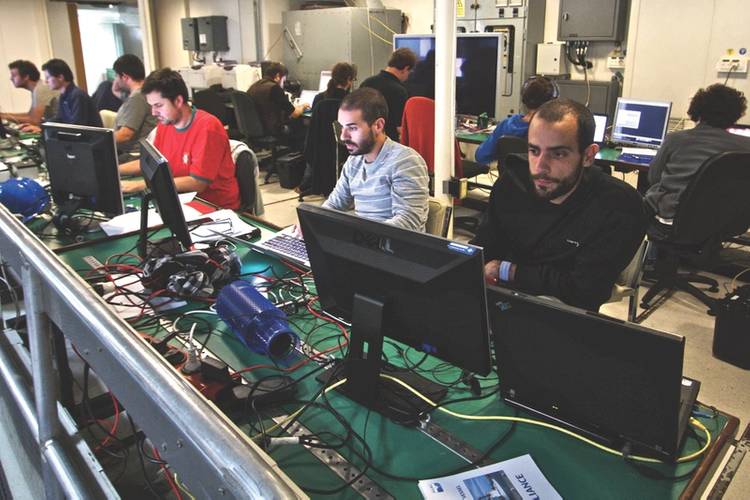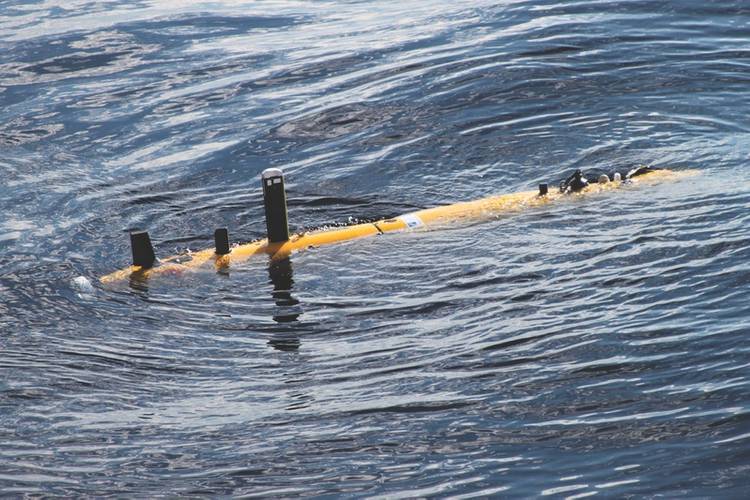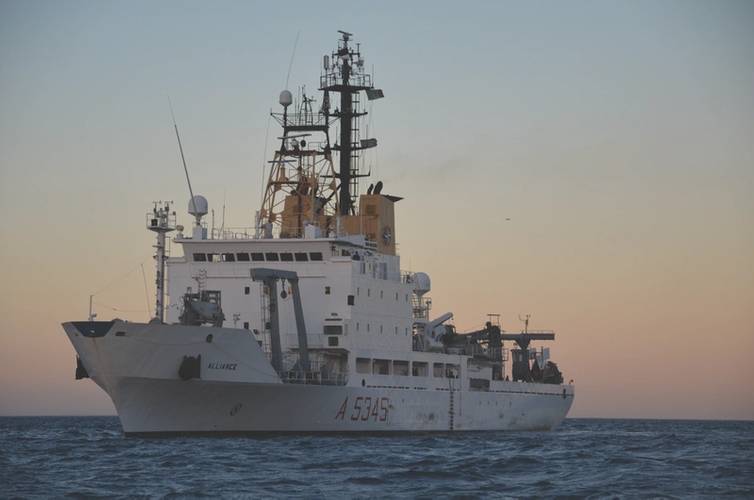search the site
CURRENTS নুনকি একটি তারার নাম, ক্যাপ্টেন শামস উজ জামান, Nunki is the name of a star; by Captain ASM Shams Uz Zaman
Anti-Submarine Warfare: Unmanned Future
Anti-Submarine Warfare: Unmanned Future
Hidden under the vast crystal blues of the Pacific, a submarine is hunted from above. A centuries-old game of cat and mouse drives the technological advancements in the ongoing race to conquer the undersea realms. Today, enhanced capability in both anti-submarine and anti-surface technology is transforming anti-submarine warfare, known as ASW.
Modern submarines are not only quieter than their ancestors, but they are also better equipped to deal with the threats that shadow them from above. For now, submarines are ahead in the race. But, with the emergence of unmanned autonomous technology there is the tantalizing possibility that in the future we will be able to detect, localize and track submarines across huge distances more effectively and at lower cost. As we enter into a new era of ASW operation, we take a look at the challenges in unmanned solutions remaining to be overcome before the tide is turned against those hidden under the waves.
The ASW industry is an endless conveyor belt of innovation, battling to develop the next game-changing technology. NATO navies already field impressive ASW capabilities, including modern frigates deploying low-frequency active sonar and advanced location devices on new modern submarines. Air assets such as specialized planes known as Maritime Patrol Aircraft, or MPAs, can deploy and monitor passive or active sonobuoys fields, and helicopters, MPH, can deploy sonobuoys and/or active dipping sonar.
While manned assets are a vital part of ASW operations, reductions in funding and new advances in submarine technology has led countries around the world to begin to develop unmanned systems for ASW. Although today’s unmanned technology has a lower-performance payload than manned, these systems offer an enormously cheaper alternative that, as a team, offer the potential to cover vast ranges while delivering covertness that may carry great tactical advantages.
“Anti-submarine warfare is a highly asset-intensive process that requires significant numbers of highly capable platforms deploying a variety of sensors. To operate these platforms and sensors at their potential, requires a cadre of trained and skilled human operators, as well as an appetite for risk, as the submarine is an increasingly dangerous adversary,” explains Dr. Kevin LePage, ASW program manager at the NATO Science and Technology Organization (STO) Centre for Maritime Research and Experimentation (CMRE) in La Spezia, Italy.
The STO-CMRE is the NATO innovation hub for developing underwater technologies for a range of maritime applications, including minesweeping and ASW operations. Their objective is to deliver innovative and field-tested Science and Technology (S&T) solutions to address the defense and security needs of the Alliance.
CMRE operates two research vessels that enable S&T solutions to be explored and developed at sea. The largest of these vessels, the NATO research vssel Alliance, is an ice-capable global class vessel that is one of the world’s quietest ship, allowing for precision acoustic studies to be conducted in environments operationally relevant to NATO. The operational experimentation being conducted from this platform has as its goal the development of cheaper, smarter solutions to give the nations a greater range of options in setting requirements for future ASW capability.
Two of the CMRE’s most valuable assets are their sophisticated autonomous underwater vehicles (AUVs), capable of operating with a degree of independent decision-making abilities. The CMRE is working to give the AUVs the capability to listen, to evaluate and to signal the presence of submarines to operators in the command and control center.
Like the increasingly used unmanned vehicles for air and land, AUVs can operate more and more flexibly in the littoral and open oceans. And, as further systems are introduced into the mix, the way potential enemies have been used to working underwater will begin to be challenged.
LePage said, “ASW has for years relied on certain remote-controlled, monitored or unmanned sensor platforms, such as the sonobuoys deployed by Maritime Patrol Aircraft and Helicopters, and permanent or deployable sensing arrays. More recently, we have seen the increased use of unmanned autonomous vehicles (UAVs) for intelligence, surveillance and reconnaissance (ISR) missions, mostly for visual confirmation. However, the fully-fledged use of unmanned systems either as an organic or standalone capability for ASW is just beginning to emerge. One example is the ACTUV, a 40-meter long-endurance unmanned ASW platform being developed by DARPA and ONR in the U.S.”
The ASW Continuous Trail Unmanned Vessel (ACTUV) is an unmanned vessel designed by the Defense Advanced Research Projects Agency (DARPA). The state-of-the-art vessel is built specifically to track quiet diesel-electric submarines, at a fraction of their size and cost.
The project also seeks to advance unmanned system autonomy so that maritime operators are able to deploy platforms capable of crossing thousands of kilometers and undergoing missions for months at a time with minor supervision.
Another example of advancements in unmanned technology for maritime security is the Seagull unmanned surface vessel (USV) developed by Israel’s Elbit Systems. At 12 meters long, the USV is claimed to be a first-of-its-kind maritime robot designed for missions in underwater mine hunting, mine clearing, anti-diver and ASW operations. The Seagull USV uses electro-optic and infrared sensors along with various sonars to search for underwater threats.
NATO at the Core of ASW Innovation
“At CMRE we have been working under NATO Allied Command Transformation, or ACT, to develop Autonomous Security Networks for ASW. This effort is divided into three projects: (1) Maritime Unmanned Systems for ASW where we engage in spiral S&T development of an autonomous ASW network based on unmanned underwater vehicles. We deploy these yearly into National and NATO ASW exercises; (2) the UWNet project, where we develop technology for military digital underwater communications networks, which is actually a critical enabling capability across all the maritime warfare domains; and (3) the Decision Support project. This final project is where we engage in ASW operations research and analysis to develop candidate tactics and decision support tools for both human operators and robots,” explains LePage.
After years of research and development in unmanned ASW networks, CRME has come across several technological hurdles that still need to be surmounted, such as the development sufficiently effective autonomous sensing, processing, classification and tracking algorithms to arrive at the required probability of detection and false alarm.
Parallel studies are being conducted to refine algorithms for advanced collaborative robotics to allow autonomous vehicles to provide adequate area coverage, barrier performance and ability to trail a target. Work is also ongoing to develop higher throughput secure underwater communications links to enable collaboration of unmanned underwater assets and provide connectivity to command and control (C2). A final piece has been the development of effective on board environmental awareness and robotic decision support.
João Alves, Underwater Communications project lead at CMRE, said, “We have made significant strides in all these areas, but there is much work that needs to be done. One recent development we are especially proud of is the promulgation of the JANUS digital underwater telephony standard, STANAG 4748. It has been developed by CMRE with the collaboration of stakeholders across NATO, the nations and industry. This is an achievement with a great impact on NATO, non-NATO, civilian and military subsea communities. We have, for the first time, the conditions to break the interoperability barrier that still stands in underwater digital communications. STANAG 4748 is the absolute first internationally promulgated standard on digital underwater communications.”
Since 2011, the CMRE have been testing their robotic network at sea against submarine targets. While they were not able to go into the details of their findings, it was clear that these types of unmanned ASW networks hold promise to deliver the next increment in ASW capability of the nations.
Challenges of Unmanned Systems in ASW Ops
For years unmanned systems have been used for ASW operations in various forms. But, there are four fundamental challenges to overcome before these systems are able to reach their full potential in maritime security. The first is to develop the concept of operations, or CONOPs, where decisions need to be made in how to deploy unmanned platforms, in what mix and for what missions.
The second challenge is to determine how these systems will be integrated together with existing platforms under a common command, control and communications (C3) architecture so that they can add value to an ASW task group. To do this, the CMRE believe the industry will have to make unmanned systems interoperable – to define standard communications protocols and message sets so that they can collaborate and share information, with the objective to provide cues to operators that can be trusted, finding subs when they are present while not flooding the system with false alarms.
The third challenge is the S&T challenge. Mainly, discovering how to make unmanned systems intelligent and able to learn from their surroundings, how to form teams and undertake ASW missions. First, there need to be improvements in the technology’s sensors and communications links – especially underwater. Also, unmanned platforms must be imbued with the ability to learn, plan, collaborate and act to maximize effectiveness, working initially under the supervision of manned assets, but with the goal of reducing as much as possible the workload to the operators. Since unmanned systems will not in general have the luxury of constant and reliable communication with operators, the CMRE is striving to develop the science and technology required to one day allow these vehicles to become truly autonomous.
The fourth and final challenge is to develop the engineering solutions that will allow maximum freedom of use of unmanned systems. This challenge includes developing energy solutions for maximum speed and endurance; heavy weather launch and recovery for maximum flexibility in operations; communications and energy infrastructure technology; underwater navigation to increase the precision of detection and cueing; and maneuverability, stability (for sensors) and seakeeping.
The Unmanned Game of Cat and Mouse
“A cornerstone of ACT and CMRE’s approach has been to engage in operational experimentation and demonstration with a continually improving unmanned ASW demonstrations. By engaging with the operational community in ASW exercises, we can capture requirements for a future unmanned ASW capability and incorporate updates for testing in the next seagoing cycle,” explains Christopher Strode, the ASW Decision Support project lead at CMRE.
“Some significant potential for new capability in operations analysis based on our ASW planning and analysis tools certainly exists, and the ASW commander in NATO task groups could certainly gain by having a tool which would allow him to optimally deploy the ASW assets at his disposal – whether legacy systems or autonomous systems. For digital underwater communications, we see significant interest in providing situational awareness to submarines, whether the surface white picture, METOC or other information for ASW. Also, CMRE’s digital underwater communications technologies have captured the submarine rescue exercise community.”
The CMRE will deploy their unmanned ASW network into the Dynamic Mongoose 2017 – the second annual NATO-led maritime ASW interoperability exercise, scheduled June 26 to July 8, 2017. This network will include powered UUVs towing arrays and surface and underwater gliders. The systems will provide a communications backbone and oceanographic characterization to assist the UUVs in working together and with C2 to make optimal decisions.
Dr. Alessandra Tesei, project leader for operational experimentation at CMRE explains, “In the past, we deployed this same network into the Proud Manta 2012 and 2013, as well as Dynamic Mongoose 2015, so we are starting to generate a track record in this regard. But our vision for the future is that unmanned technologies will significantly aid the Alliances ASW mission by putting scalable, flexible, cost-effective, long-endurance high-performance unmanned ASW sensing networks at the fingertips of ASW commanders, leading to much-increased flexibility and effectiveness in ASW operations.”
The future will entail a shift in the approach to ASW operations. Maritime security is moving from a small number of expensive platforms to an unmanned alternative, capable of unleashing vast numbers of platforms over great distances at low-cost. This innovative technology hails the start of a new kind of game of cat and mouse. As these systems grow and advance at an exceptional rate, submarines grow nervous under the rolling waves that once promised refuge.
Acknowledgements
João Alves (UWNet PL), Chris Strode (Decision Support PL), Dr. Alessandra Tesei (MUS for ASW PL), Dr. Kevin D. LePage, Principal Scientist and Cooperative ASW Program Manager (NATO, CMRE).
(As published in the May 2017 edition of Marine Technology Reporter)













